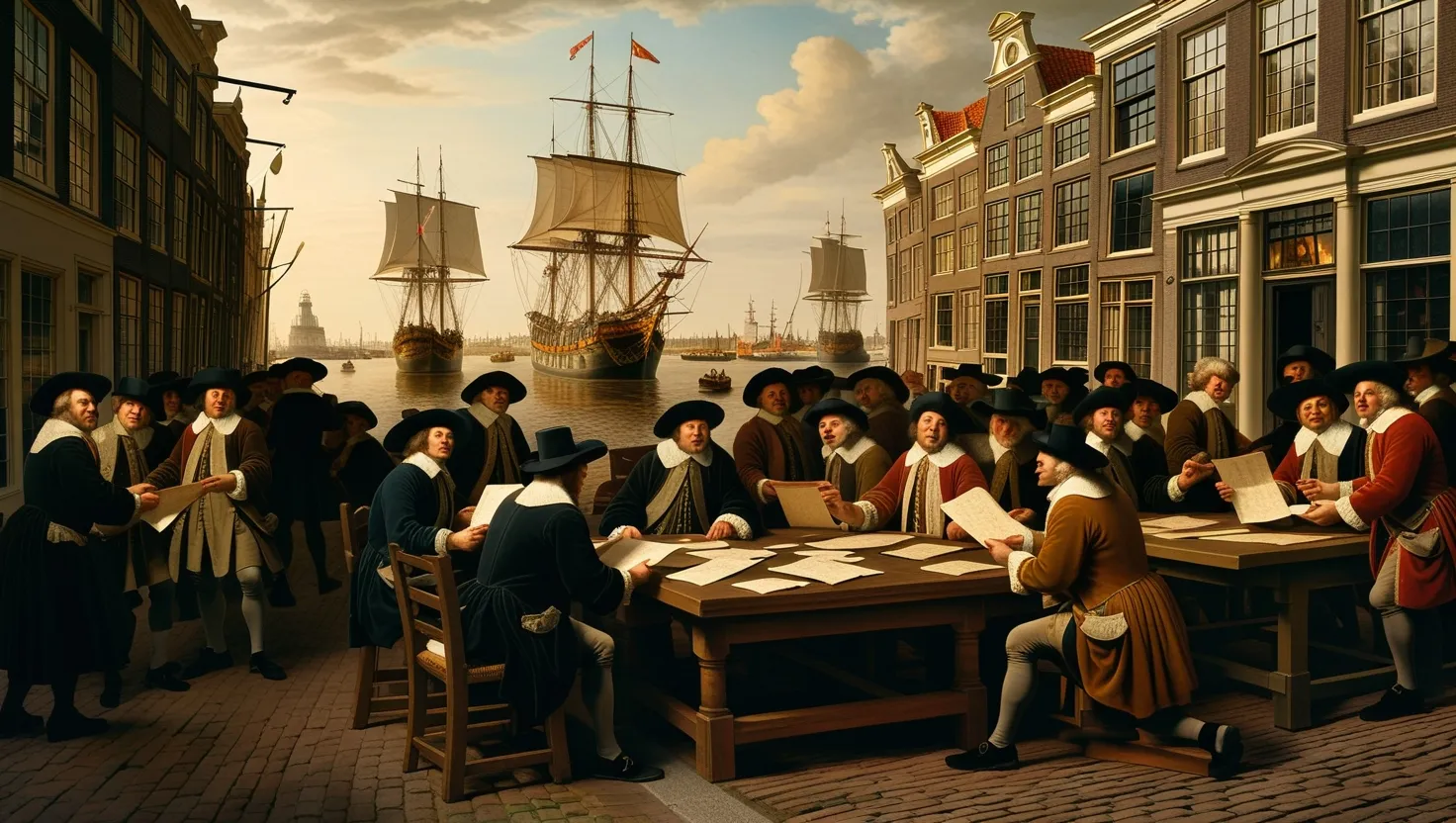Let’s pretend you and I are huddled inside a canal-side café in Amsterdam, rain streaking the big windows and espresso warming our hands. Before you can even slouch back in your seat, I blurt out the story of the Amsterdam Stock Exchange—the OG of modern investing. Now, you probably think stock exchanges are dry, sprawling, fluorescent-lit floors filled with guys waving paper, but this place in 1600s Amsterdam was wild—more bazaar than boardroom, with a flair you don’t find in any hedge fund today.
Here’s the thing: what happened on the Damrak shaped everything from your retirement account to the wild meme-stock surges. But most folks have no idea how many convention-busting, jaw-dropping turns played out behind those market stalls. Ever heard about the first hostile takeover, or the trading floor fistfights over options contracts scrawled on scrap paper? Bear with me—this is the kind of financial folklore you won’t get from CNBC.
Let’s rewind to 1602. The Dutch East India Company—VOC for short—needed boatloads of cash to sail ocean routes nobody else dared. But what if people were too scared to lock up their savings for decades on some bet that cinnamon and nutmeg would make it past pirates and monsoons? Here’s their crux move: they chopped up ownership into standardized chunks—actual paper shares you could buy and sell any day. Not only did this make it safer and easier to invest, but it also created something new—your ability to exit whenever you wanted. Other rich guys in Europe must have spat their coffee: “Wait, I don’t have to stay stuck in this forever?” Suddenly, capital flowed in like you wouldn’t believe.
Here’s a curveball: those shares, printed and traded in cramped taverns, were totally legal to sell on to strangers. Imagine you’re in a bar with a scrap of VOC paper, and you spot a buyer who’ll take it off your hands before news of another shipwreck hits the docks. Liquidity was born—not from academic think tanks, but out of pure necessity.
But it’s not just about “buy low, sell high.” Let’s talk about options—for real. By the 1630s, traders in Amsterdam were so ahead of the curve, they were cutting handshake deals on “opsies”—the ancestor of that call spread in your brokerage app. There were brokers so creative in their contracts that local playwrights made jokes about get-rich-quick schemes. Men bet on grain prices, herring hauls, and, yes, tulip bulbs—and this wasn’t just side action. One document from the period describes a trader locking up future shipments of pepper, agreeing to a price that could make him a fortune or bankrupt him overnight. It was Wall Street in wooden shoes.
Now, picture the earliest short sellers—these guys bet against companies before it was even mainstream. For the first time, someone looked at shares and thought, “What if prices drop? How do I make money if things go south?” A few creative souls borrowed VOC stock, sold it high, and hoped to buy it back when the price bottomed out. The debates came fast: Was this brilliant or outright evil? City authorities even tried banning it, and not for the last time. Makes you wonder—if you could travel back, would you moralize about betting against your neighbor, or just marvel at the sheer chutzpah?
Fistfights weren’t uncommon. When you’re making or losing fortunes in candle-lit rooms, tempers flare. Once, a crowd formed when a rumor spread that a returning fleet had sunk off Sumatra. Shares sold off immediately—but then someone spied the actual flagship moored at the docks. The price whiplashed so fast that, according to some gossip, at least two traders fainted from the shock. Think GameStop, only with ships and scarves.
But with great fortune comes great trickery. VOC directors—imagine the ultimate C-suite—were infamous for keeping secrets, especially when things smelled fishy. Small shareholders felt left out, sometimes even marching to the Exchange itself to demand answers. They brought petitions and sometimes a ruckus. Did they invent shareholder activism? If the company you invest in started hiding things, would you be bold enough to protest, or would you just sell your shares and head home?
Every so often, someone would drop an anonymous note accusing the bosses of lining their own pockets while ships vanished at sea. This led to forced transparency. The exchange started publishing prices—on lists called ‘prijscouranten’—for all to see. No more secret deals for the well-connected. Those first price sheets? They were like posting live stock tickers in a world that, until yesterday, thrived on rumors and hearsay.
The whole thing wasn’t just financial wizardry. It got emotional. Let’s talk about the tulip mania. In 1637, speculators drove the price of certain flower bulbs through the roof—some fetching more than a canal house. Everyday folks poured everything into plants that sometimes didn’t even bloom. Predictably, it crashed. People lost their savings, friendships frayed, even marriages collapsed over bad tulip debts. “It was not the tulip that failed the buyers, but the buyer who failed the tulip,” one wag wrote. That’s a line you’ll want to remember when your next crypto gamble tanks.
Every time a war loomed—like when England and the Dutch butted heads—VOC shares would tank overnight. You can picture merchants biting their lips over coffee, wondering if their dividends would pay for another season. Would you have held your nerve when cannonballs, not algorithms, were your market risks?
Maybe the most surprising bit is how little has really changed. Fast forward to now: You see liquidity, exit strategies, options, and risk management just as they did. Imagine telling an Amsterdam broker from 1640 he could buy shares in a Chinese tech firm from his phone in five seconds. After he’d picked his jaw up, he’d probably say, “But does it have buyers and sellers? Can the little guy get a fair price? Do people try to rig it?” Same issues, new tricks.
Here’s a thought to chew on: Would you trust a system where, tomorrow, your shares could be worth nothing if the fleet vanishes—literally—or do you still get anxious logging into your app when the news flashes red? Are we so different from those traders under low Dutch skies, hoping for one more good deal before sunset?
“Markets are never wrong—opinions often are.” Legendary trader Jesse Livermore said that three centuries later, but it would have rung true in Amsterdam’s alleys.
What fascinates me most is that all this complexity, all these rules, emerged in a place barely bigger than a neighborhood market. Innovations we take for granted—selling your shares before breakfast, borrowing to amplify a bet, hedging disaster—were crafted out of necessity, sometimes brilliance, sometimes luck. Would you have thought to package risk like that, or just stuck with hiding cash in the chimney bricks?
So, sip your coffee and imagine the scene: sailors bragging about far-off lands, speculators hawking contracts, nervous widows clutching their share certificates, a city humming with energy. Amsterdam didn’t just invent the stock exchange. It invented the very idea that strangers could trade risk, hope, and fortune in broad daylight.
And as we leave the café, you might find yourself wondering: if you were there, would you be the bold innovator passing handwritten contracts at candle-lit tables—or the cautious observer waiting to see where this wild experiment in trust, greed, and human ambition would lead?






